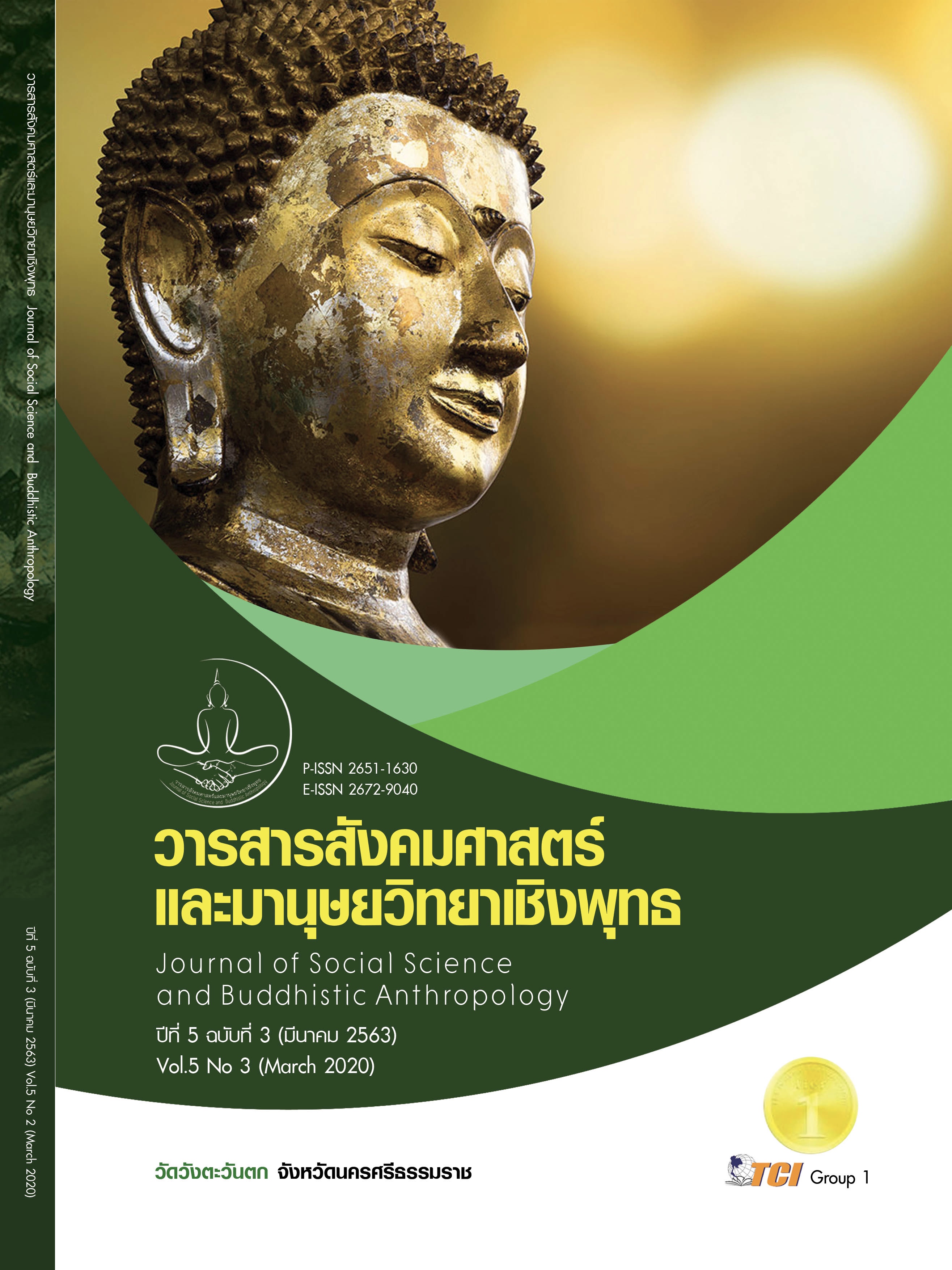THE DEVELOPMENT OF SMOKING CESSATION MODEL FOR THE ELDERLY IN SUB-DISTRICT HEALTH PROMOTING HOSPITAL OF NAKHON PATHOM PROVINCE
Keywords:
Elderly, Smoking Cessation, Model DevelopmentAbstract
The purpose of this study was to develop of smoking cessation model for the elderly in a sub-district health promoting hospital of Nakhon Pathom Province. The procedures consisted of three steps as follows: step I: Problem Analysis, step II: Development of the model, and step III: Evaluation of the model. The research instruments were assessment scales of nicotine addiction and behavior questionnaire of smoking cessation. Sample size were elderly in Sub-district health promotion hospital of Nakhon Pathom province 60 samples. The statistics utilized to analyze the data were mean (), standard deviation (S.D.), binary logistic regression by backward and t-test.
The results revealed that 1) The factors that were found to influence smoking cessation: craving factor, physical factor, metal and emotional factors, behavioral factor, and social (p < .05) 2) The developed model comprised of the learning activities as follows : 1) Developing self-awareness about the disadvantages of smoking 2) Developing confidence for stopping smoking 3) Encouraging confidence of the samples to stop smoking by specialists, 4) change the smoking Cessation, 5) Getting supporting from family members and people surrounding 6) Making decision to stop smoking. 3) The results showed that after pretesting the smoking cessation model, the elderly in the experimental group had significance lower nicotine addiction level than the comparison group (p<.01) and the elderly in experimental group had significance stopped smoking more than the comparison group (p<.05). It could be suggested that the model can be applied as a guideline for the smoking cessation in the elderlies and can foster good health that can lead young adults to be the healthy elderlies in the future.
References
กองยุทธศาสตร์และแผน กระทรวงสาธารณสุข. (2560). หนังสือสถิติสาธารณสุข. นนทบุรี: กระทรวงสาธารณสุข.
ญาสิณี ทองมี และคณะ. (2559). ผลของแรงสนับสนุนจากชุมชนต่อการเลิกบุหรี่ โดยใช้การมีส่วนร่วมของชุมชนตำบลชีทวน อำเภอเขื่องใน จังหวัดอุบลราชธานี. Southeast Asian J Trop Med Public Health, 5(1), 15-28.
นิยม จันทร์นวลและศิริญญา วิลาศรี. (2560). ผลการประยุกต์ทฤษฎีการรับรู้ความสามารถตนเองในการปรับเปลี่ยนพฤติกรรมการสูบบุหรี่ของเจ้าหน้าที่ตำรวจ สถานีตำรวจภูธรเมืองชัยภูมิ. วารสารวิทยาลัยพยาบาลบรมราชชนนี อุตรดิตถ์, 23(1), 44-58.
เบญจมาศ บุณยะวัน และคณะ. (2555). ประสิทธิผลของการประยุกต์ทฤษฎีขันตอนการเปลี่ยนแปลงพฤติกรรมในการเลิกสูบบุหรี่ของเจ้าหน้าที่รักษาความปลอดภัย โรงพยาบาลศิริราช. วารสารเกื้อการุณย์, 19(2), 88-102.
พรรณี ปานเทวัญและอายุพร ประสิทธิเวชชากูร. (2557). การประยุกต์ทฤษฎีขั้นตอนการเปลี่ยนแปลงพฤติกรรม กับการปรับเปลี่ยนพฤติกรรมการสูบบุหรี่. วารสารพยาบาลทหารบก, 15(1), 36-44.
ภาสกร เนตรทิพย์วัลย์ และคณะ. (2560). ประสิทธิผลของโปรแกรมส่งเสริมการเลิกบุหรี่โดยประยุกต์ทฤษฎีขั้นตอนการเปลี่ยนแปลงสำหรับข้าราชการตำรวจ กรุงเทพมหานคร. วารสารพยาบาลตำรวจ, 9(1), 82-93.
มหาวิทยาลัยสุโขทัยธรรมาธิราช. (2558). พัฒนาการวัยผู้ใหญ่และผู้สูงอายุ. นนทบุรี: มหาวิทยาลัยสุโขทัยธรรมธิราช.
มูลนิธิสถาบันวิจัยและพัฒนาผู้สูงอายุไทย. (2559). รายงานสถานการณ์ผู้สูงอายุไทย. กรุงเทพมหานคร: โรงพิมพ์เดือนตุลา.
วีรศักดิ์ สะอาดเอี่ยม และคณะ. (2560). ผลของโปรแกรมปรับเปลี่ยนพฤติกรรมการสูบบุหรี่ในผู้ชายวัยทำงาน อำเภอไชยา จังหวัดสุราษฎร์ธานี. วารสารบัณฑิตวิจัย, 7(1), 85-100.
สมพงษ์ ลือกลาง. (2556). การพัฒนารูปแบบการช่วยเลิกบุหรี่สำหรับผู้ใหญ่ที่ติดบุหรี่ในหน่วยบริการปฐมภูมิ. ใน วิทยานิพนธ์พยาบาลศาสตรมหาบัณฑิต สาขาการพยาบาลเวชปฏิบัติชุมชน. มหาวิทยาลัยมหิดล.
สุรีย์ จันทรโมลี. (2561). การออกกำลังกายผู้สูงอายุกลุ่มติดสังคม ตามแนวปรัชญาเศรษฐกิจพอเพียง. ใน เอกสารรายงานการประชุมวิชาการ (PROCEEDINGS) การประชุมวิชาการและนำเสนอผลงานวิจัยระดับชาติ ครั้งที่ 12 การวิจัยนวัตกรรม สร้างสรรค์เศรษฐกิจไทย. มหาวิทยาลัยเวสเทิร์น.
Jeremias, E., et al. (2012). Smoking cessation in older adults. INT J TUBERC LUNG DIS, 16(2), 27-38.
Lee, S., et al. (2016). Smoking cessation and receipt of cessation advice from health professionals among older smokers in Taiwan. Preventive Medicine, 91(1), 89-95.








